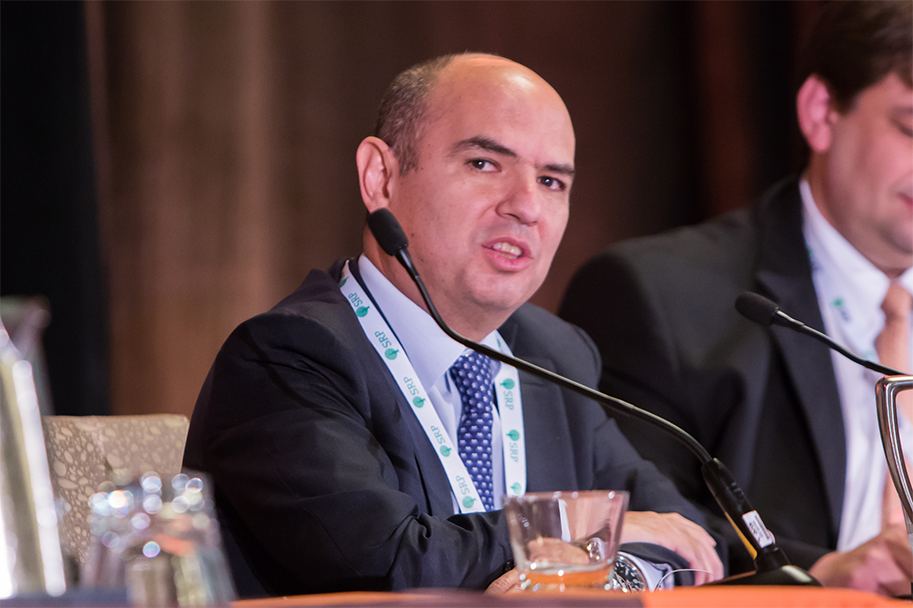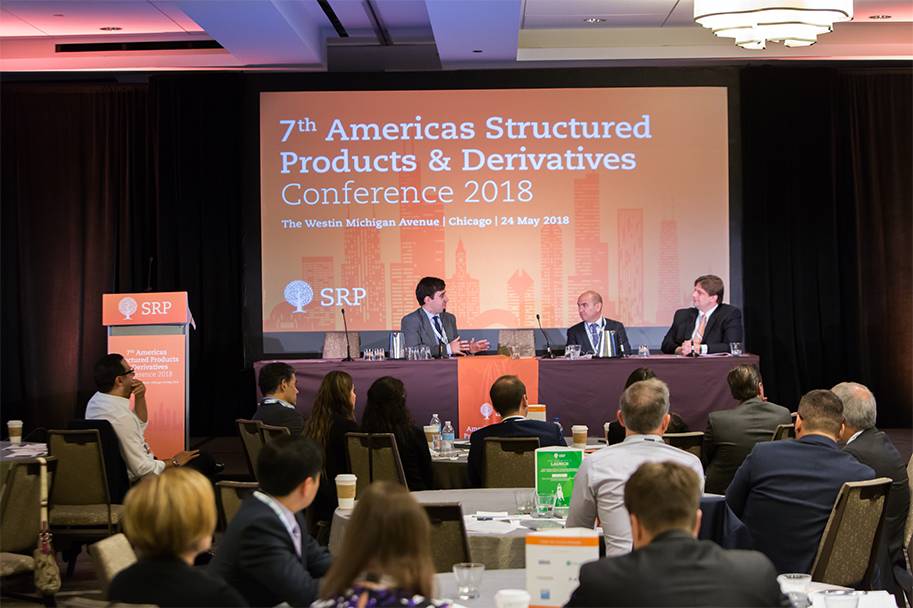Data presented at the Performance & Market Presentations panel during the 7th SRP Americas Conference on May 24 in Chicago shows that there have been a total of 11,128 tranche products that matured in the period between March 1, 2017 and February 28, 2018, representing a sales volume of over US$35bn. In other words, 2017 was a very good year for the structured products market in the Americas with average performance up 8% and average return up 4%, year-on-year.
The returns in the region have been the best in the last five years, according to Marco Mattos (pictured), head of structured and funding products, Itau. "This is the main reason the volumes went up," Mattos said. "We are on the right direction and we could get the right products to sell to our clients."
Manuel Meza (below), managing director, global structured solutions, BBVA Bancomer, commented that the structured products market in the Americas is concentrated mainly on capital protection. "Clients in Mexico prefer structured notes and therefore there are a lot of cash flow products," Meza said. "However, when we have some non-capital protected structures, it is because they are linked to equities." On the equity side, Mexican investors prefer structures linked to local underlyings, according to Meza. "Local investors often use Eurostoxx 50 or the S&P 500."

Meza also pointed that the foreign exchange (FX) market in Mexico is "quite intense" in the use of structured products. "These are very short-term products ranging from 15 days to two months," he said. "Although 2017 started with the FX at levels of 22 pesos per US dollar, in six months we went to almost 17.5 pesos per US dollar. The FX market is like a thermometer from an investor's point of view and it has been moving a lot."
Additionally, Meza noted that it is important to highlight that rates in Mexico have increased drastically from 3.5% to 7.5% in the last two years. "In 2017, this made it difficult for us to start to talk to the clients to find a pick-up, because right now you can get a free risk/return of 7%-7.5% in six months," he said. "Therefore, you have to give a nice premium."
Similarly to Mexico, Peru is a growing market in terms of structured products, according to Meza. "Though not as big as in Mexico, the market in Peru is growing and has been an alternative for the investors to get exposure to foreign indices," he said. Products in Peru are typically "average calls - nothing very sophisticated". However, Meza noted that although the country is a dual-currency economy, investors don't have much access to foreign markets but still try to invest in European indices as well as in very specific sectors.

Mattos explained that average performance in Brazil decreased as some of the main assets such as the Brazilian Real stood at low volatility. "The index did not move so the performance of some of the products in Brazil, 96% of which are capital protected, went down," he said.
Other banks issuing notes in Brazil have started using reverse convertibles as well as calls on funds, according to Mattos. "They are maturing now so the performance started to get better and I expect to see this number up in 2018," Mattos said.
Last year, comparing Brazil to other main markets, volatility was high but for the Brazilian economy, it was the lowest volatility in the last 10 years, according to Mattos. "But now, as we are facing elections in November, the volatility went back to the market," he said.
In the past few months, Itau has focused on what they believed was the right product mix for their clients. "We outperformed the main rate in Brazil and that is because we had a clear view and we changed our products and developed a platform allowing clients to compare products," Mattos said. Additionally, Itau changed the way it pays the fees. "Instead of paying a flat fee, we are paying on accrual basis," he said. "Also, if you look at the risk the clients took, it was a very good risk/return because we did not go to equity, or FX. We did go to the Brazilian interest rates so it was a great deal for clients."
Mattos added that the structured products market in Brazil is changing with an increasing number of equity notes from international markets, especially on funds. "One of the bestselling products in Brazil has been a call on a mutual fund that was capital protected," said Mattos. "We are going to have good return in 2018 as well but for a different reason."
In Brazil, since the interest rates are higher than in other countries, there is a lot of room to develop capital protected structures, according to Mattos. "This is a reality for now but I think a year from now, that is going to change," he said. "Our interest rates are already at 6.5% and this is pretty low for Brazil if we look historically. Therefore, we are definitely going to see some shifts in the market."
Related stories:
Feeling good doesn't make money, SRP Americas
Putting structured products in a model isn't always the answer, SRP Americas